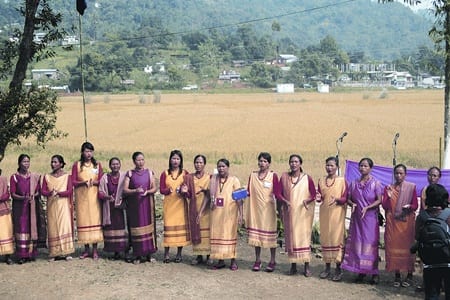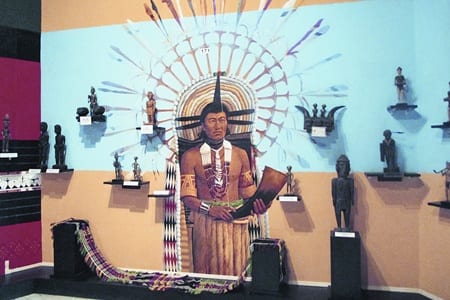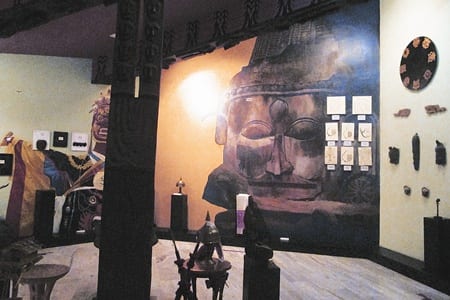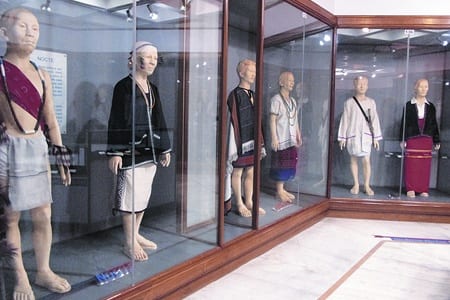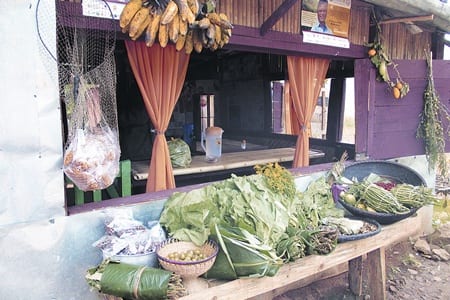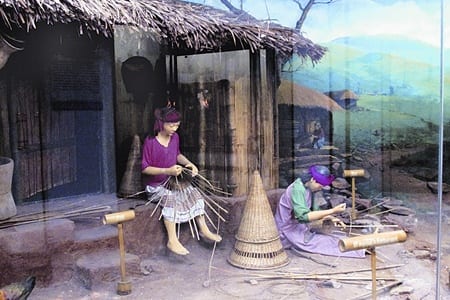Exploring an indigenous heritage
The indigenous culture, cuisine and traditions of the eight states of North East India are unique tourism offerings of the region to the new age traveller who wants to understand and experience the ethos of the land and its people By Sudipta Dev
The recently organised Indigenous Terra Madre in Shillong brought the world tribes to India and showcased before them the culture and cuisine of the north eastern states. For those interested in understanding and exploring the wealth of tribal life in these states, the best beginning is the Don Bosco Museum which is a part of the Don Bosco Centre for Indigenous Cultures. The museum is the only one of its kind in North East India. The various galleries in the museum are a vibrant showcase of all the 400 tribes and sub tribes of the eight states in the region.
–
“The Don Bosco Centre for Indigenous Cultures includes the museum, research, publications and our effort to share knowledge through seminars, courses, workshops, etc,” says Fr (Dr) Joseph Puthenpurakal, director, Don Bosco Centre for Indigenous Cultures. There are 22 alcoves at the entrance of the museum, with figurines of people from the region welcoming visitors. Before beginning tour of the galleries that cover seven floors, a beautiful documentary ‘Mist and Magic’ acquaints visitors to what is in store for them when they travel through these states. There is a Language Gallery showing groups of all the languages of the world. “The language chart was put up as without knowing the language one cannot pretend to know the culture,” asserts Fr Puthenpurakal. The entry to the expansive Art Gallery is marked by a stained glass door depicting all the eight states. The gallery has murals of mask dances and Thanka paintings from Sikkim, head gears from Nagaland and tattoo art from different tribes, etc.
Living traditions
A glimpse of the North East is not possible without understanding the morphology of settlements and housing patterns, and the Housing Pattern Gallery depicts this in the best possible way through a model that dominates the hall. Different kinds of settlements are shown in enchanting landscapes – from stilt houses in Mizoram and Manipur to quaint huts in Nagaland and Sikkim and sloping roof dwellings in Arunachal Pradesh. The Costumes & Ornaments Gallery has a colourful display of dress styles and traditional ornaments worn by various tribes, from Angami Naga to Mizo – shell jewelleries, wrist bands, head ornaments and beaded necklaces. The Weapons Gallery is a display of traditional weapons of different tribes, from Naga warriors to Garo and Khasi warriors. The wide ranging display of traditional percussion (long/ elongated/ round drums) and wind instruments (buffalo horn bugle) occupy a pride of place in the Musical Instruments Gallery. The everyday life of tribals is well displayed in the Basketery Gallery. Baskets occupy the foremost place in a tribal home and is used for storage, decoration, catching fish, and other activities. The Traditional Technology Gallery is another interesting segment with works of goldsmith, blacksmith, basket making, pottery making on display. The Agriculture Gallery highlights jhum cultivation and terrace cultivation.
–
The Land and Peoples Gallery has life size models and busts of different ethnic groups with distinctive facial features. Religion and Culture Gallery gives an insight into the ancient beliefs of indigenous cultures, alternate religious traditions of India, practices of Christian faith, Hindu beliefs, and others. There is also a display of Teotihuacan, ‘Place of God’ in Aztec language. A gallery dedicated to Don Bosco gives visitors an insight into his philosophy and the family that is working around the world with young people, particularly in the field of education.
Cuisine traditions
At the Food Gallery in the museum visitors get a chance to order indigenous food from any of the eight north eastern states. “Travel agents with big groups can inform the Food Gallery in advance and order local cuisine,” informs Fr Puthenpurakal.
–
In the city of Shillong there are a few restaurants that offer authentic local cuisine for travellers and locals alike, for instance Alelang Restaurant that specialises in Khasi cuisine and Naga Mandarin, which as the name suggests, offers spicy and unique flavours of Nagaland. For a fine dining experience of local culinary traditions the Rice Court at Royal Heritage Tripura Castle and Sao Aiom (‘Four Seasons’) at Ri Kynjai resort are recommended.
Village visit
For the new age experiential traveller interested in getting a first hand experience of taste and traditions of indigenous cultures, it is essential to visit a village in a scenic locale. Khweng village in Ribhoi district is the closest to Shillong. The village is not too far from Guwahati-Shillong main highway, from where you have to take a detour. The inhabitants are Khasi tribes people, who belong to the Bhoi subtribe. Khweng village was established in 1932 by 10 families. The village has a picturesque setting, surrounded by green fields, hillocks and ponds. Currently there are 106 houses in the village, with a population of 615 people. Though the primary occupation in the area is cultivation (ginger, turmeric and various varieties of sticky rice), what has made Khweng famous is seri culture, that is Eri silk weaving. In fact the highlight of the trip to the village is a visit to the Eri silk spinning centre where tourists do not just buy beautifully woven stoles, shawls and traditional dresses crafted by the locals, but also get an opportunity to witness the life cycle of the silk worm.
It is the everyday life of the village women which is of interest to any visitor – whether it is weaving silk or catching fish. The local women have a unique way of catching fish with their baskets in the shallow river that flows through the village. Another interesting spot is the painstakingly nurtured garden of Lastnokhel Jalong, who has been trying to preserve the vanishing plants of the region. These wild plants that are on the verge of extinction, are brought by Jalong from the wild and grown in his own garden.
In Khweng, a village of friendly and hospitable people, visitors can take a break from walking and sit for a while in a quaint village cafe that serves tea and rice. The other villages where visitors can get similar experiences and more are Nongtraw, Dewlieh, Laitsohpliah, Pyrda, Nongwah, Mawhiang in East Khasi Hills; Dombah in West Khasi Hills and Moosakhia in West Jaintia Hills.



